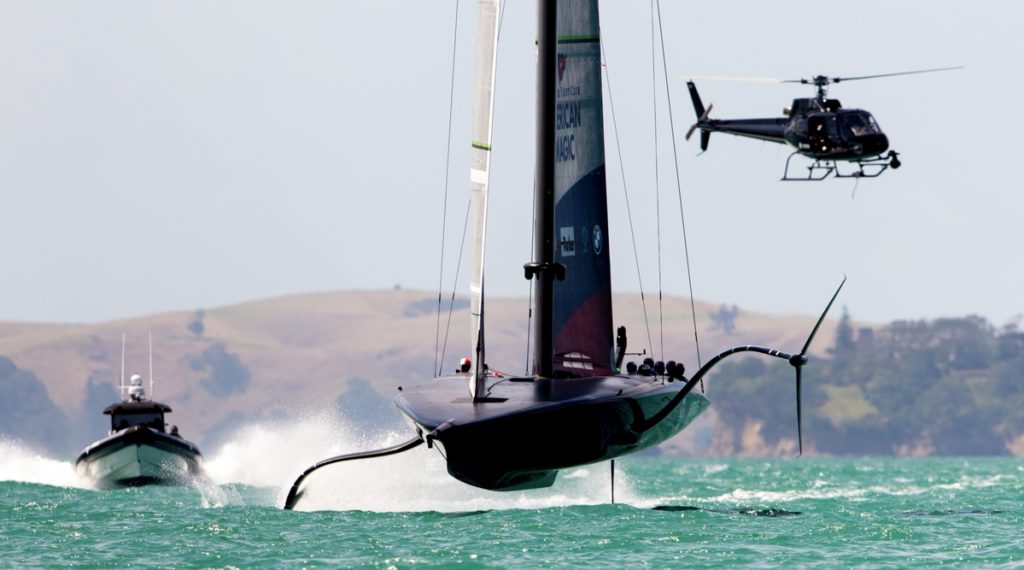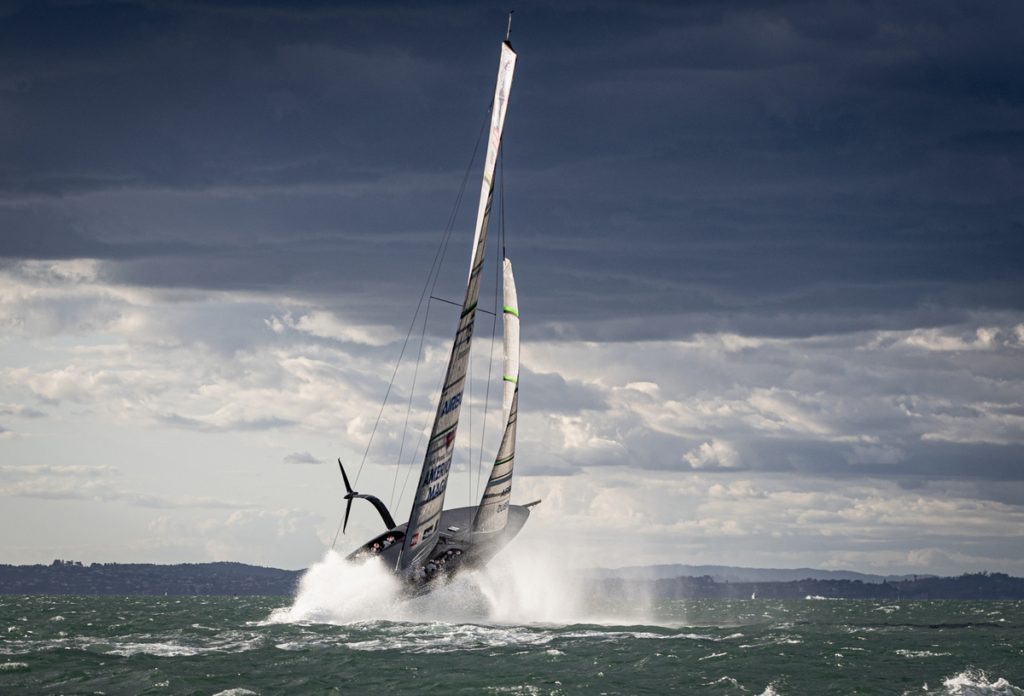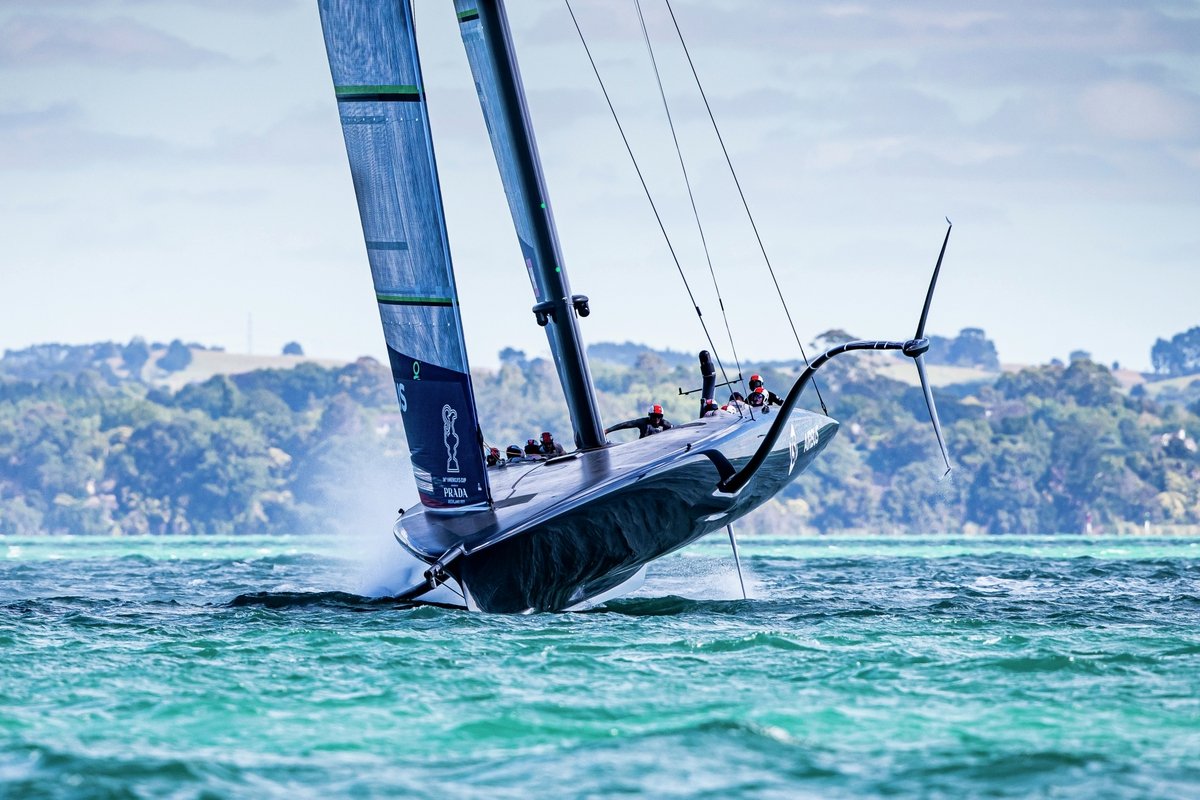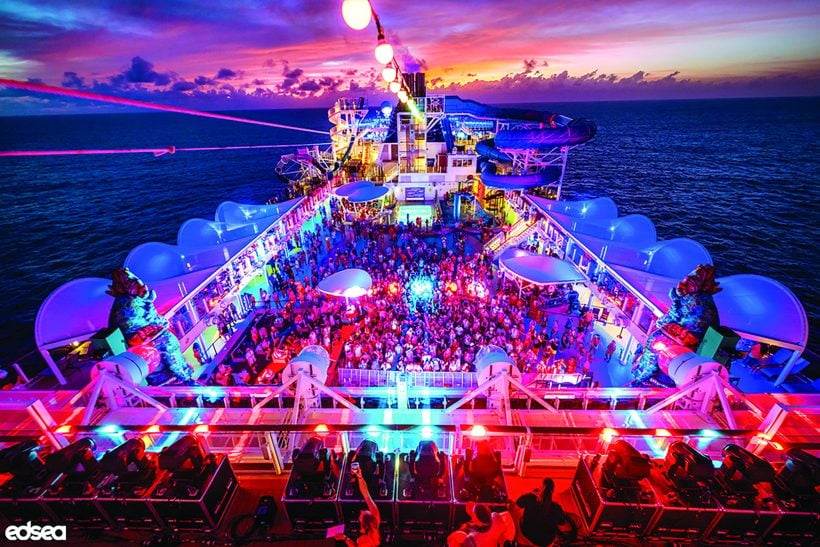Is that a Zen koan? Sadly, it is not. The American/New York Yacht Club challenger for the world’s oldest sporting trophy’s current holder, Emirates New Zealand, was eliminated early on.
Three countries and their teams were competing in the 36th edition of this event, and this time, their goal was to oust New Zealand on their home waters on March 6. The challengers were the aforementioned Americans, plus the British and the Italians.
After a few weeks of intense sailing competition for the qualifying Prada Cup, the Italian boat Luna Rossa, sponsored by luxury brand Prada and tire maker Pirelli, left the American boat Patriot and the British entry Britannia 11 in her wake. The America’s Cup (AC) is thus between the Italians and Emirates’ New Zealand team.

This is the fourth time in the entire 170 years of AC competition that the Americans did not make it to the finals.

What happened? How did American Magic (AM), as the effort was branded, funded by billionaires Hap Fauth, Roger Penske and Doug DeVos—all with extensive sailing or racing credentials, as well as the support of corporate sponsors, like Airbus, and backed by the New York Yacht Club—sail, or more accurately fly, onto the rocks of defeat?
There will be as many postmortem searches for answers as there are crew on the boats. But here are a few theories gleaned from conversations with longtime Cup observers. Some asked to remain anonymous, preferring not to be trolled by their fellow yachtsmen. However, yacht-racing journalist and commentator Tucker Thompson, known as the “Voice of the Cup,” spoke to Worth on the record. “In a snapshot, it seems their defeat came down to two factors. They lacked enough skill at the helm, particularly at the starts, and the capsize stripped them of the ability to develop and refine the boat and sailing program at a crucial time.”
Another anonymous point of view? “The entire enterprise was so new and untested that it was a technological crapshoot. The design choice for this AC of a 75-foot foiling racing monohull was a radical choice. Foiling racing catamarans, as raced in the last Cup, have usable, understandable sailing technology. These beasts do not.”

Proof is that the second boat designed by the American Magic team was radically different from the first boat, so essentially AM’s Patriot was a prototype. This is a far cry from the glory days of Dennis Conner and the 12 Metre AC boats that were raced, and thus refined, over decades.
These new foilers are designed to reach speeds of 60 mph, so there is little room for error; sailors are in body armor and crash helmets.
However, Thompson points out, “The future of the AC will always be in boats that are pushing the limits of what’s possible…which foiling monohulls certainly do.”
Some validation for this not-ready-for-prime-time theory comes from the capsize of AM’s Patriot during the qualifiers. She was badly damaged, almost sank and may not have recovered. Oddly too, the iconic photo that the AM team sent out was of Patriot blasting her way through the water on her starboard stern, the foils creating a cascade of white water, her exposed foil looking like a wind turbine. Patriot appears not well suited to sailing fast in a straight line. The image, in the end, seems to have been prophetic.
It is not that the AM effort was underfunded or did not have the best-of-the-best in terms of boat builders and team support experts in areas like flying controls, foil design, weather forecasting and sensor technology. It’s just possible that these were too advanced, too new and not tested long enough.
COVID-19 may have had an effect too. The entire pre-AC race series was severely truncated. Sailors and their boats did not have enough time to get to know their opponents. Thompson concurs. “The pandemic forced the cancellation of AC World Series competitions. These events would have been crucial for the teams to measure their performance against each other.”
Another notion was explained to me in Bermuda when I wrote about the 35th Cup four years ago: “It is a kids’ game now. You have to grow up sailing foiling boats to intuitively sail them. If you come from the monohull world and try to compete at the world level in foilers, you are disadvantaged from the get-go.” Skiers understand this. There are no world champion snowboarders who started out on skis.

The winning skipper of the 35th AC and, therefore, the defender for the 36th, New Zealander Peter Burling, was the world’s best Moth sailor. The Moth is a tiny, one-person, foiling sailboat. Dean Barker, the AM skipper, shows impressive wins, but in one-design keel boats. The transition to flying foils may have been too hard. Ditto for Terry Hutchinson, AM skipper and CEO, who has one of the most impressive winning sailing resumes on the planet…some of them, however, in boats like the J-24 designed in 1975.
Thompson does not share this opinion. “I think AM’s management was extremely capable of doing what they were supposed to do,” he explained. “The sailing team had more than enough foiling expertise.”
Or, it could have been all the above—COVID-19; unproven boat design; and a crew not instinctually comfortable with foiling. Whatever, come March, the AC will be Luna Rossa Prada/Pirelli against Te Rehutai, the Emirates/New Zealand Cup defender.
No one has seen Te Rehutai on the water, as the defender does not have to qualify. How fast she is and how well-sailed is the guessing game to be played out in Auckland’s harbor.
Going forward, four years from now at the 37th AC, Thompson gets the last word: “For sure the Americans will mount another serious challenge and do everything to once again bring back the Cup from whence it came.”
Cup update: The AC will be “postponed,” according to event organizers, as Auckland just went into a seven-day lockdown.









